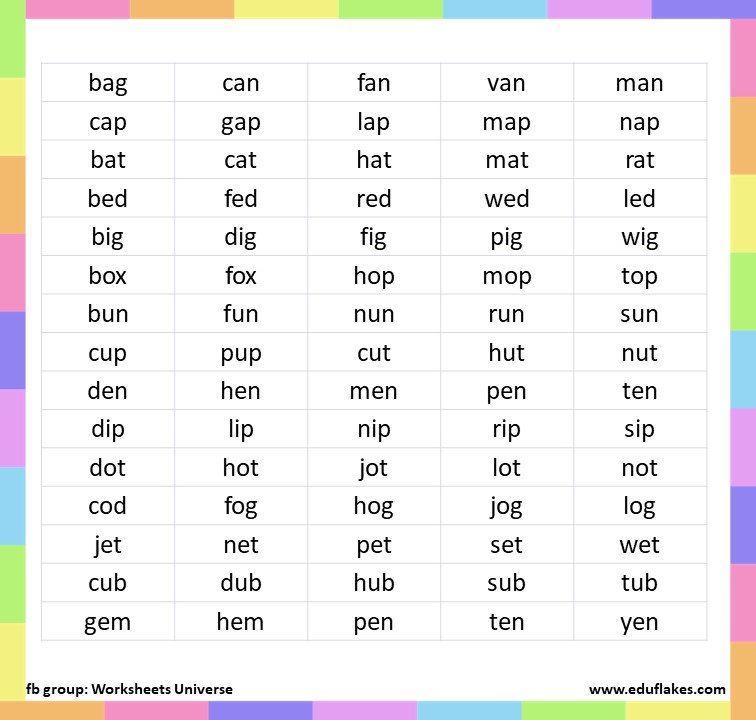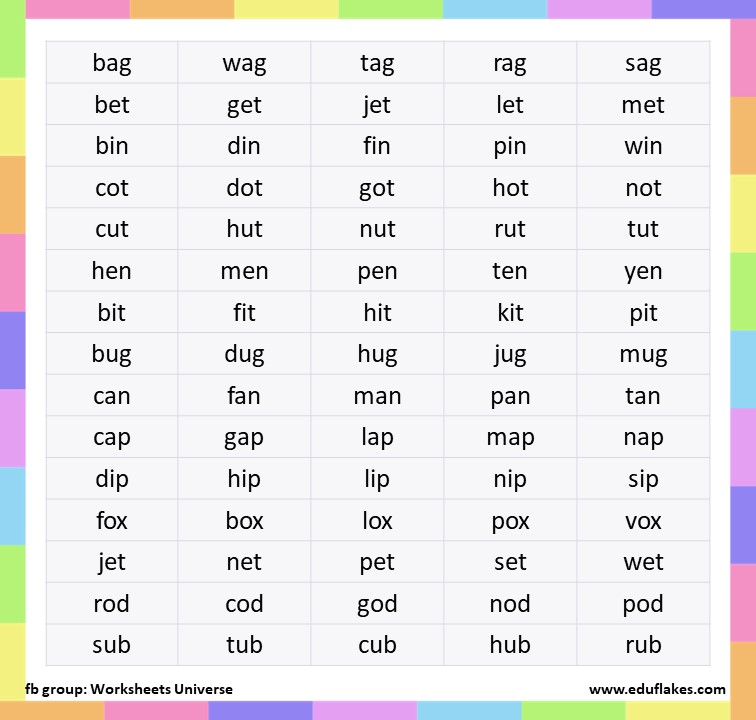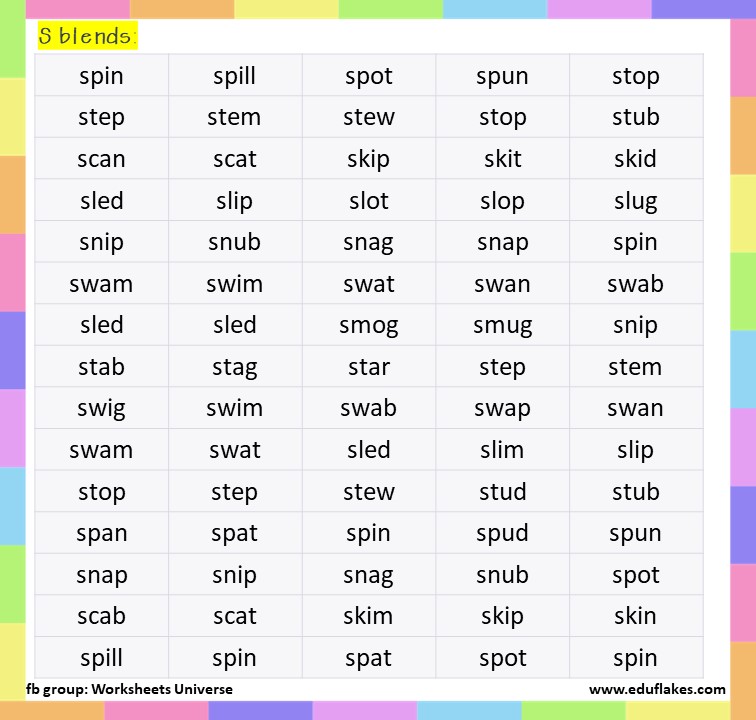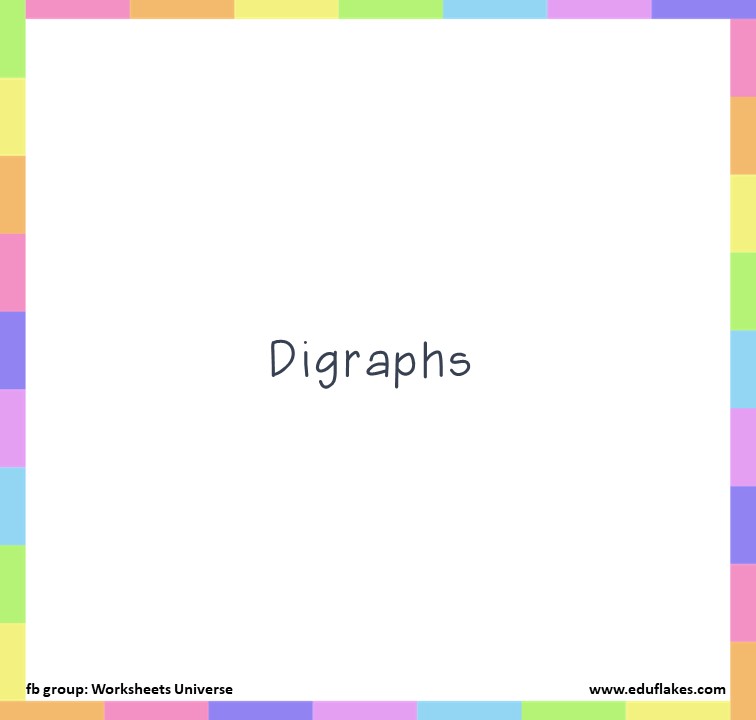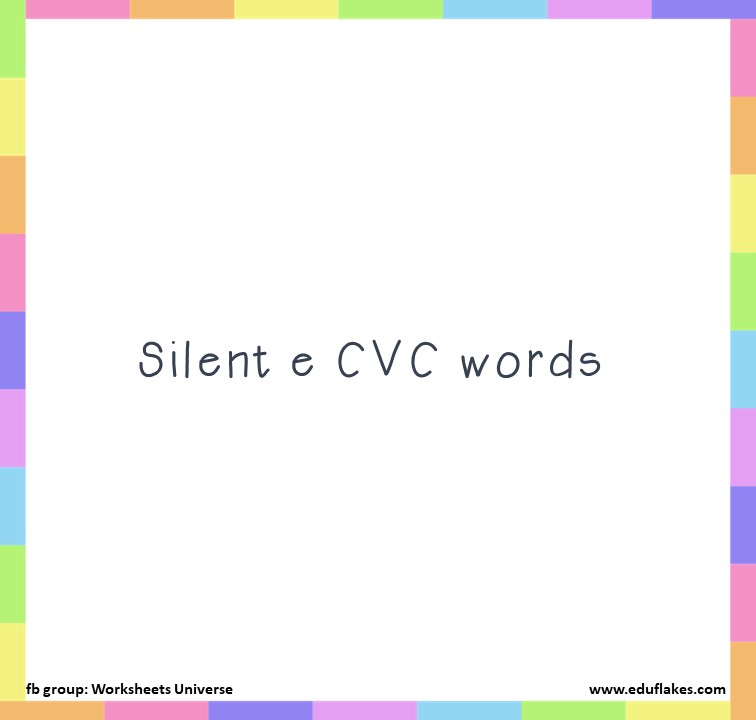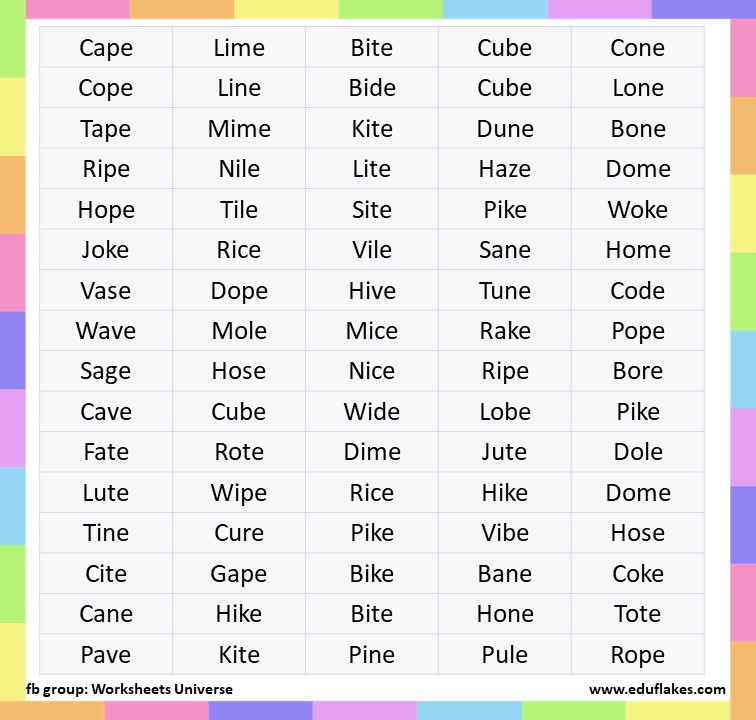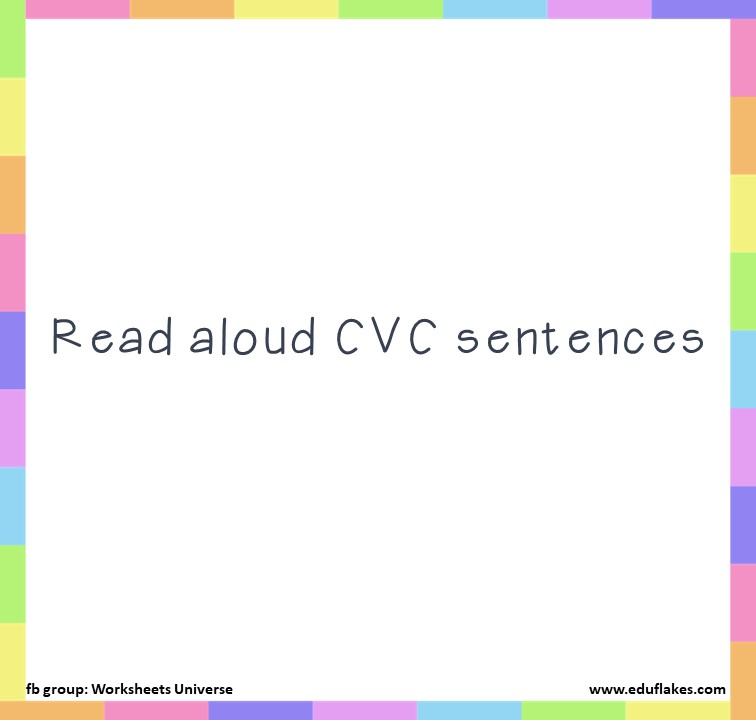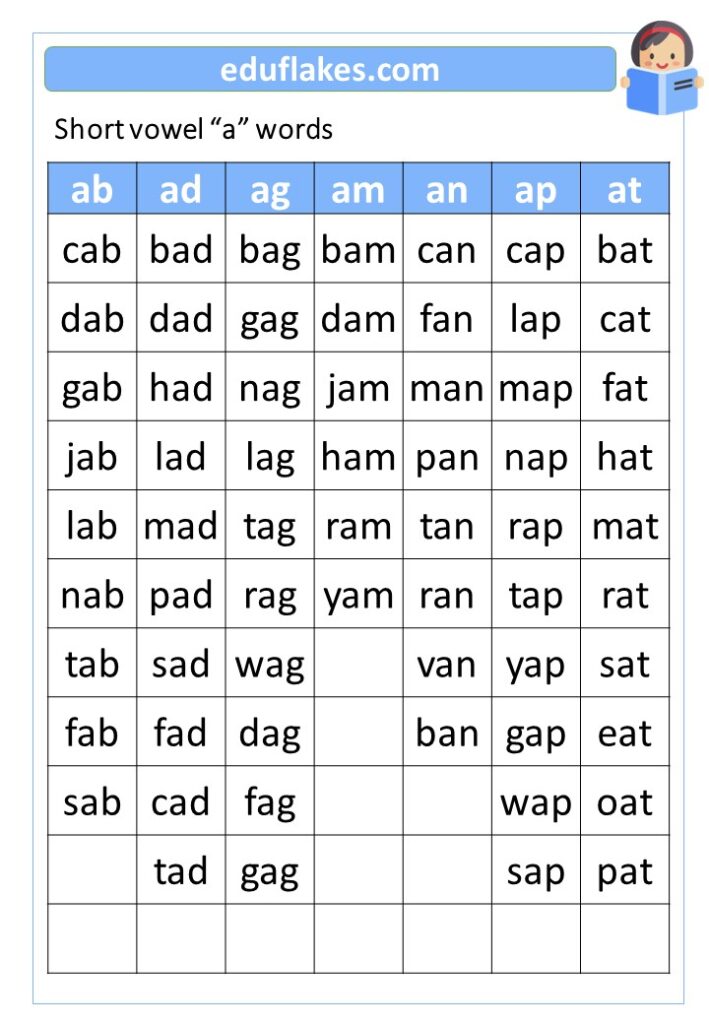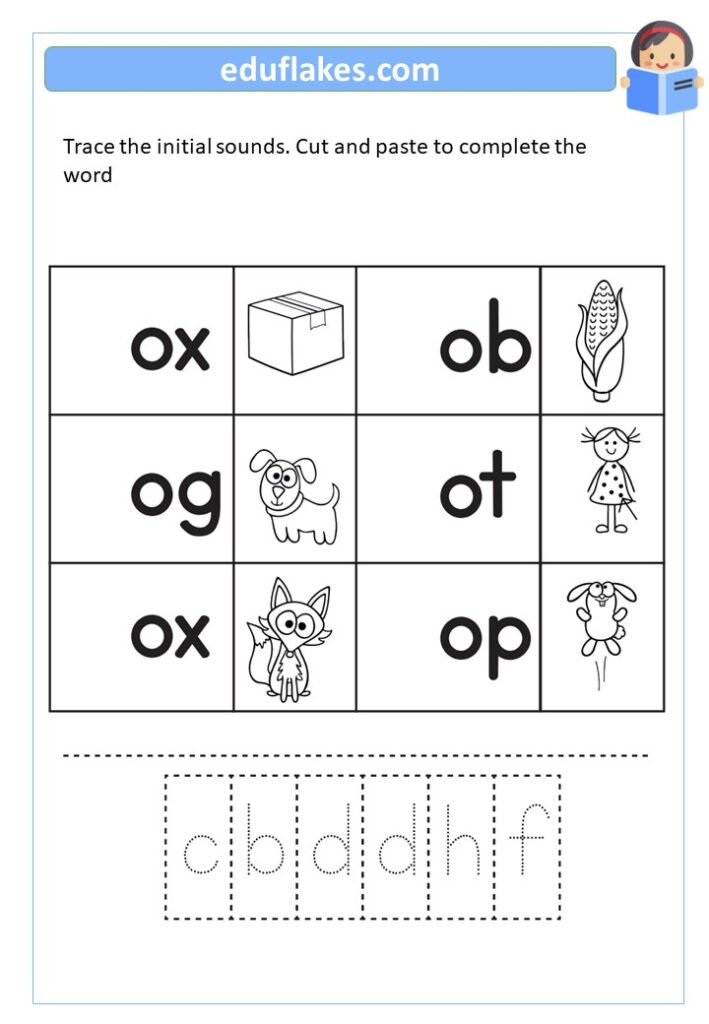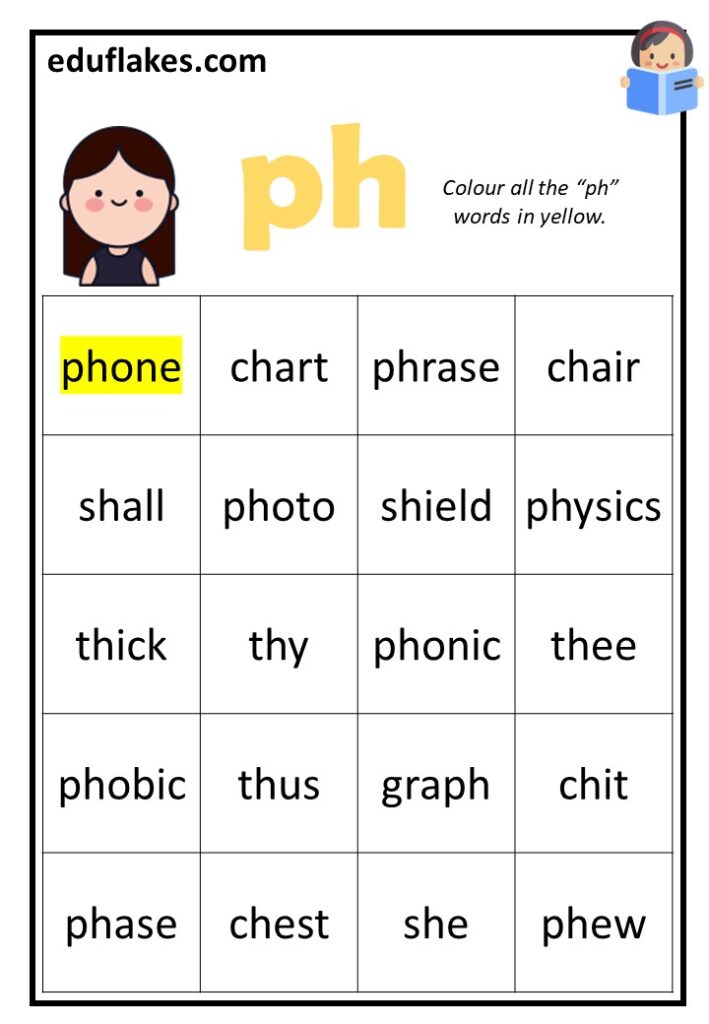CVC phonics worksheets Free PDF – It is important to learn CVC (consonant-vowel-consonant) words in phonics because they are the building blocks of many words in the English language. By mastering CVC words, children can begin to decode and read more complex words with greater ease. CVC words also provide a foundation for understanding word families and patterns, which are important components of early literacy.
Here are some steps to teach CVC words in phonics:
- Introduce the concept of CVC words and explain that they are made up of a consonant, vowel, and consonant sound.
- Teach individual consonant and vowel sounds and how to blend them together to make CVC words. For example, teach the sounds of “c,” “a,” and “t” and then blend them together to make the word “cat.”
- Use visual aids like pictures and flashcards to help children associate the sounds with the corresponding letters.
- Provide opportunities for children to practice reading and spelling CVC words. This can be done through games, worksheets, and other interactive activities.
- Gradually introduce more complex words and word families as children become more comfortable with CVC words.
Overall, learning CVC words in phonics is an essential step in developing early literacy skills and building a strong foundation for reading and writing. By teaching CVC words in a systematic and engaging way, children can develop phonemic awareness, improve their decoding skills, and become confident readers.
CVC (consonant-vowel-consonant) worksheets are designed to help children practice and reinforce their phonics skills with CVC words. Here are some ways that CVC worksheets can be helpful:
- Develop phonemic awareness: CVC worksheets can help children develop phonemic awareness by teaching them to recognize and manipulate individual sounds in words. By identifying the consonant and vowel sounds in CVC words, children can learn to distinguish between different sounds and understand how they come together to form words.
- Improve decoding skills: CVC worksheets can help children improve their decoding skills by teaching them to blend sounds together to read words. Through repeated practice with CVC words, children can develop fluency and accuracy in decoding, which can make reading more enjoyable and less frustrating.
- Build vocabulary: CVC worksheets can help children build their vocabulary by introducing them to new words and word families. By learning CVC words, children can begin to understand how words are related and build a foundation for understanding more complex words in the future.
- Enhance spelling skills: CVC worksheets can help children develop spelling skills by teaching them to recognize patterns in words and sound out unfamiliar words. By practicing spelling CVC words, children can improve their ability to spell and write words correctly.
Overall, CVC worksheets can be an effective tool for teaching phonics skills and helping children develop foundational literacy skills. By providing engaging and interactive activities, CVC worksheets can help children improve their phonemic awareness, decoding skills, vocabulary, and spelling skills.






